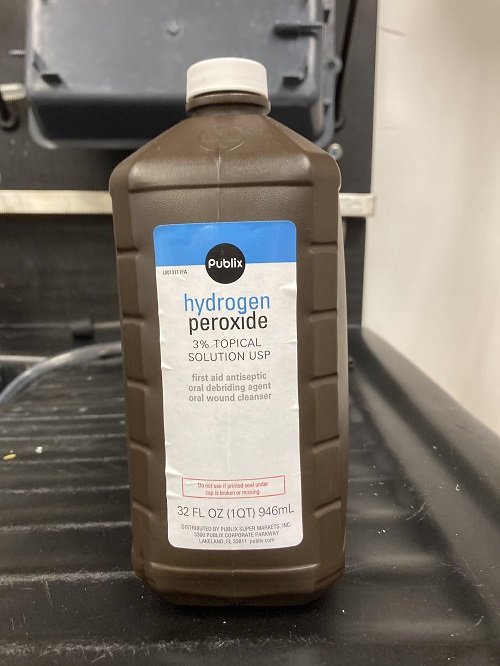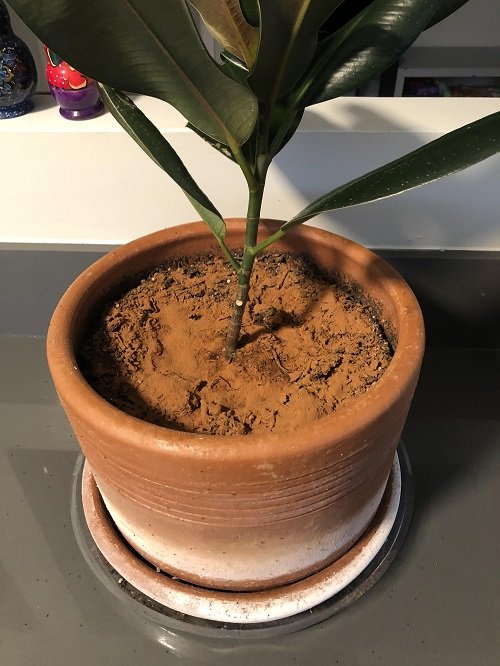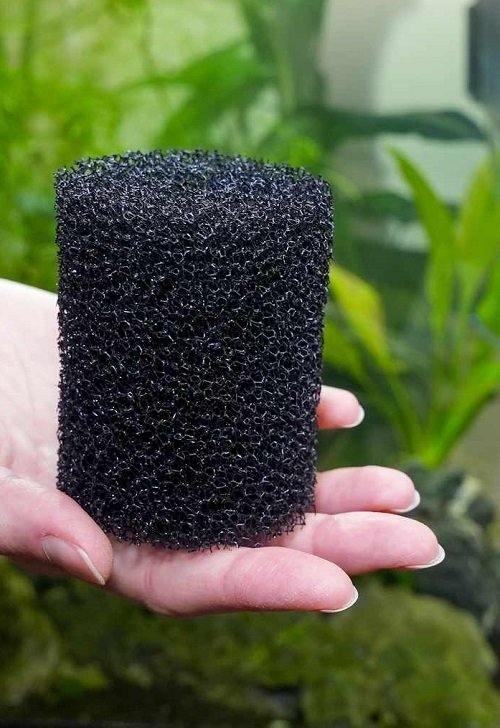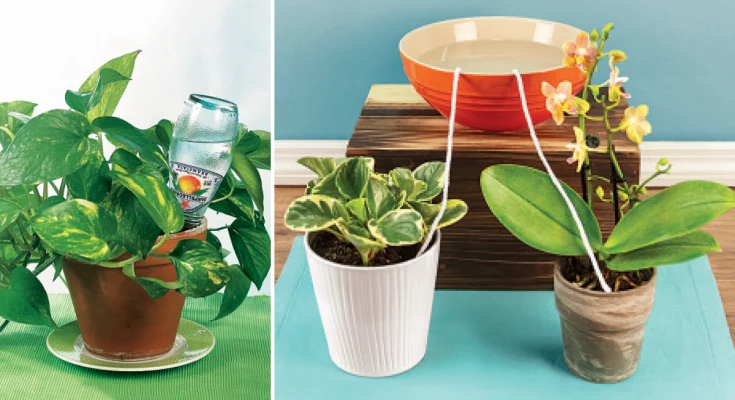Wondering – Are there any Home Items You Can Use to Save Your Plants from Overwatering? Well, there are! Keep reading!
Overwatering is one of the biggest issues that can result in the demise of any plant. To ensure your green friends are safe from it – here are some home items for your rescue!
Home Items You Can Use to Save Your Plants from Overwatering
1. Hydrogen Peroxide

Hydrogen peroxide has two atoms of oxygen. When it breaks down, the extra oxygen helps the roots of the plants to breathe better, ultimately helping them recover from the stress caused by lack of air and too much moisture.
What’s more, it also has anti-fungal properties, which ensure the roots are safe from the chances of root rot and fungal infections.
To use, mix it with water in a 1:3 ratio and apply the solution to the plant after ensuring the growing medium has gone dry at a depth of 1 inch from the topsoil.
2. Cinnamon Powder

Cinnamon has natural anti-fungal properties, and it is a boon for plants combating sev
Simply sprinkle and mix one tablespoon of cinnamon powder in the plant’s pot that’s recovering from overwatering. You can also do this when propagating cuttings; check out more such DIY homemade fungicide ideas here.
3. Gravel or Pebbles

How? Simply add a layer of them (2-3 inches) at the bottom of the pot before putting in the growing medium. It will improve drainage by trapping the water below – keeping it away from the roots.
4. Sponges and Diapers

Well, these are PROs when it comes to water absorption, and keeping them at the bottom of the container, right above the drainage hole, guarantees excess moisture absorption. However, this can also cause more moisture retention, so you’ll have to be very cautious when it comes to watering.
You will simply have to press the soil at the top of the pot to squeeze out the excess water at the bottom, which will drain from the pot’s hole!
5. Charcoal

For best results, use activated charcoal as it can absorb toxins and harmful chemicals quite effectively. It is also anti-microbial, meaning it suppresses the growth of harmful fungi in the soil, keeping the roots safe from the chances of rots and other issues.
6. Use Forks for Tilling

Grab that fork from the kitchen and use it to till the soil in the pot regularly every few days. This works by creating a space within the growing medium, allowing more air to pass. This results in less moisture (as the passing air dries up the excess water), enabling the roots to breathe properly. This hack is good for smaller specimens in pots like succulents, herbs, and houseplants.
7. Add Potato Slices

Potatoes have a tendency to absorb moisture, thanks to osmosis. However, it works both ways – if the soil is wetter than the potato slices, the slices will absorb the excess moisture, and if the slices have more water content than the soil, the moisture may move from the potato to the soil.
It would be a good idea to keep 5-6 potato slices on top of the soil of an overwatered pot. You can also bury them!
8. Chopsticks to the Rescue

Chopsticks are made of dry wood, which has a tendency to absorb moisture. So, in an overwatered pot, till the soil using chopsticks. Once done, break and bury them in the growing medium. Over time, they will soak in some of the excess water!
The Bottom Line
The best way to avoid overwatering the plants is to be mindful when it comes to moistening the growing medium – do not do it on a regular basis, and water the plants only when the soil feels a little dry to the touch.



